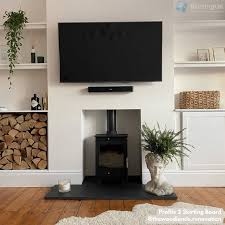Ready-made wall panelling has emerged as a revolutionary force in interior design, offering homeowners an accessible path to architectural sophistication. These innovative kits eliminate the traditional complexities of custom millwork, providing pre-designed, pre-cut solutions that transform ordinary spaces into extraordinary interiors. This comprehensive guide navigates the essential considerations for selecting the perfect ready-made panelling to enhance your home’s aesthetic and functionality.
Understanding Panelling Materials
The foundation of any successful panelling project begins with material selection. Each option presents distinct advantages tailored to different applications and preferences.
MDF (Medium-Density Fibreboard):
The reigning champion of ready made panelling, MDF offers exceptional versatility and affordability. Its uniform composition ensures a perfectly smooth surface that accepts paint flawlessly, creating a seamless, high-end appearance. Modern MDF formulations include moisture-resistant variants suitable for rooms with moderate humidity levels. While durable, MDF can be susceptible to sharp impacts and requires proper sealing, especially on cut edges, to prevent moisture absorption.
PVC and Vinyl:
For areas prone to moisture, such as bathrooms, kitchens, and basements, PVC panelling provides an ideal solution. These panels are completely waterproof, resistant to mold and mildew, and typically feature easy-clean surfaces. Modern manufacturing techniques allow PVC to convincingly mimic wood grains and other textures. Installation is often remarkably straightforward, with many systems utilizing interlocking mechanisms.
Polyurethane:
When seeking intricate, high-detail moulding reminiscent of classic plasterwork, polyurethane emerges as the premier choice. Exceptionally lightweight and easy to install, these panels feature elaborate patterns that would be prohibitively expensive in wood. They are impervious to moisture and insects, maintaining their shape perfectly over time. While typically more expensive than MDF, they offer unparalleled detail for traditional and ornate styles.
Navigating Style Categories
Aligning your panelling selection with your home’s architectural language and your personal taste is crucial for a cohesive result.
Traditional Styles:
-
Wainscoting: Typically covering the lower third to half of a wall, wainscoting introduces classic elegance while protecting walls from furniture scuffs. It excels in formal areas like dining rooms and hallways.
-
Picture Frame Moulding: This style creates a grid of rectangular or square boxes across the wall surface, evoking the refined sensibility of Georgian and Victorian interiors. It works beautifully in living rooms and studies.
-
Raised Panels: For the ultimate in traditional luxury, raised panels feature a central section that slopes upward within a surrounding frame. This style makes a powerful statement in formal dining rooms and entryways.
Modern and Transitional Styles:
-
Slat Walls: Comprising thin vertical or horizontal panels with deliberate gaps, slat walls introduce rhythm and textural depth. This contemporary style excels as a feature behind beds, sofas, or media consoles.
-
Geometric Panels: Bold, large-format patterns including hexagons, triangles, and asymmetrical designs transform walls into graphic art statements. These panels anchor modern spaces with confidence and creativity.
-
Flat Panel Board and Batten: A cleaner interpretation of a classic, this style uses wide MDF panels with simple battens creating a large, minimalist grid. It delivers texture without overwhelming a space, perfect for transitional interiors.
Critical Selection Criteria
Room Proportion and Scale:
Consider your room’s dimensions carefully. Elaborate, large-scale patterns may overwhelm a compact room, where simpler, vertically oriented designs can enhance the sense of height. In spacious rooms with high ceilings, substantial panelling adds necessary visual weight and grandeur.
Color and Finish Strategy:
Your approach to color significantly influences the final impact. Painting the panelling the same color as the walls creates a subtle, tonal effect that emphasizes texture over contrast. Alternatively, using a contrasting color makes a bold architectural statement. A semi-gloss or satin finish is often recommended for its durability and ability to highlight the panelling’s profiles through subtle light reflection.
Functional Requirements:
Assess the practical demands of the space. For high-traffic areas like hallways, durable MDF or PVC offers resilience. In bathrooms or kitchens, prioritize moisture-resistant materials. If concealing wall imperfections is a primary goal, opt for panelling that provides complete coverage rather than applied strips.
Installation and Preparation Insights
While ready-made kits simplify installation, proper preparation remains essential for a professional outcome.
Wall Assessment: Begin with walls that are structurally sound, dry, and relatively smooth. While panelling can mask minor flaws, significant cracks or unevenness should be addressed beforehand.
Tool Preparation: Most installations require basic tools including a level, tape measure, fine-toothed saw, adhesive, and a nail gun for supplemental security. Having a caulk gun and paintable caulk on hand ensures seamless joints and corners.
Installation Process: The general workflow involves marking layout lines on the wall, applying adhesive to the back of each panel, positioning them carefully, and using a level to confirm alignment. Following the manufacturer’s specific instructions is paramount for optimal results.
The Transformative Impact
Beyond immediate visual enhancement, ready-made panelling offers several long-term benefits. It introduces architectural character to builder-grade homes, increases perceived property value, and provides additional insulation and sound dampening qualities. The psychological effect of living in a well-defined, thoughtfully designed space should not be underestimated; panelling adds depth and personality that flat walls cannot provide.
Selecting the right ready-made panelling involves a harmonious balance of material properties, aesthetic alignment, functional needs, and installation practicality. By thoughtfully considering these factors, you can execute a transformation that elevates your home’s interior, creating spaces that are not only beautiful but uniquely yours. This investment in your home’s character pays dividends in daily enjoyment and long-term value, proving that exceptional design is now more accessible than ever.
